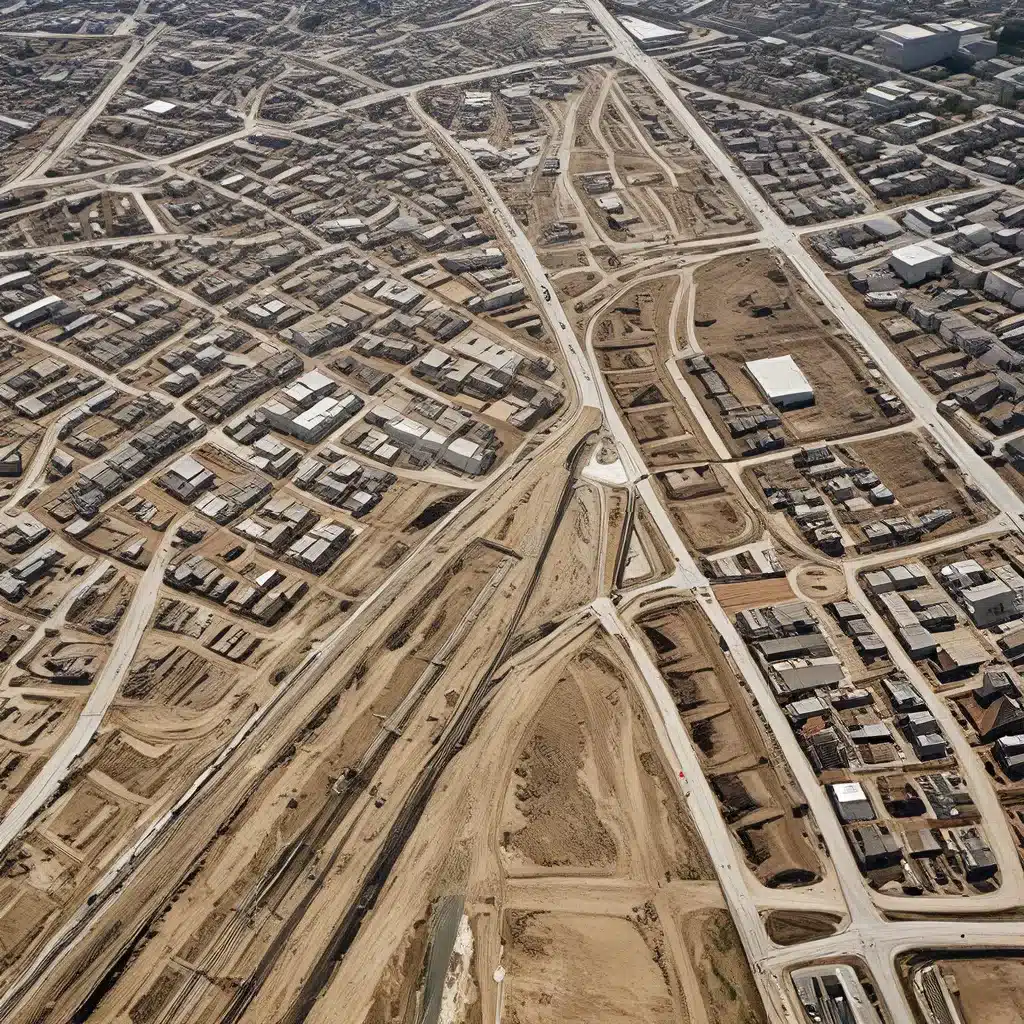
Transforming Environmental Liabilities into Economic Assets
Perched on the edge of town, a forgotten plot of land lies dormant – its history shrouded in the haze of industrial waste and environmental neglect. This contaminated site, once a source of community blight, holds an untapped potential just waiting to be unlocked. But how do we breathe new life into these forgotten corners and transform them into thriving, sustainable spaces?
Embracing the Bioeconomy Approach
The answer may lie in an unexpected place – the world of the bioeconomy. This innovative approach harnesses the power of biological resources to revitalize contaminated landscapes, creating value and opportunity where there was once only decay. By integrating nature-based solutions and circular economy principles, we can unlock a pathway to rejuvenate these blighted areas, unlocking their full potential for the benefit of the community.
Tackling Contamination through Bioremediation
One of the key tools in the bioeconomy’s arsenal is bioremediation – the use of living organisms, often plants and microbes, to break down and remove pollutants from the environment. This elegant, environmentally-friendly approach taps into the incredible capabilities of nature to restore balance and health to damaged ecosystems.
Studies have shown that carefully selected plants and microbes can absorb, degrade, or stabilize a wide range of contaminants, from heavy metals to organic compounds. By strategically deploying these natural remediators, we can gradually reclaim even the most severely polluted sites, laying the groundwork for future development.
Unlocking Value through Biomass Valorization
But the bioeconomy approach goes beyond just cleanup – it’s about unlocking the value hidden within these contaminated landscapes. The plants and microbes used for bioremediation don’t just remove pollutants; they also produce biomass – a renewable, biological resource that can be put to work in a variety of ways.
Imagine a scenario where the biomass harvested from a reclaimed site is used to produce biofuels, bioplastics, or even high-value biobased chemicals. What was once a liability can now become an economic asset, generating revenue and creating new jobs for the local community.
Integrating the Bioeconomy into Policy Frameworks
Of course, unlocking this potential requires more than just technical know-how – it also demands a supportive policy framework. Integrating bioeconomy principles into regulations and strategies at the local, regional, and national levels can help drive the transformation of contaminated sites, aligning environmental protection with sustainable economic development.
By fostering collaboration across sectors, from agriculture and industry to waste management and urban planning, we can create a holistic approach to revitalizing these blighted areas. Innovative financing mechanisms, smart specialization strategies, and targeted support for pilot projects can all help unlock the full potential of the bioeconomy in the context of contaminated site remediation.
Building a Bioeconomy-Driven Roadmap
So, what does this bioeconomy-driven roadmap to revitalization look like in practice? It starts with a deep understanding of the site’s unique challenges and opportunities – the types of contaminants present, the local ecosystem, and the potential for biomass production and valorization.
Armed with this knowledge, we can then develop a comprehensive strategy that integrates bioremediation, biomass utilization, and economic development. This might involve establishing bio-based value chains, where the harvested biomass is processed and transformed into a range of valuable products and services. It could also mean aligning regional development plans with bioeconomy principles, creating synergies between environmental restoration and sustainable economic growth.
Embracing the Circular Bioeconomy
Ultimately, the bioeconomy approach is about more than just cleaning up contaminated sites – it’s about embracing a new, circular way of thinking. By recognizing the inherent value in these degraded landscapes and leveraging the power of nature, we can transform environmental liabilities into economic assets, all while promoting sustainability, biodiversity, and community well-being.
It’s a bold vision, to be sure, but one that holds immense promise. So, let’s roll up our sleeves and get to work – unlocking the potential of contaminated sites, one bioeconomy solution at a time. Who knows what hidden treasures we might uncover along the way?
If you’re eager to learn more about how Inland Waters Inc. is leading the charge in this exciting new frontier, I encourage you to explore our website and discover the transformative power of the bioeconomy.


